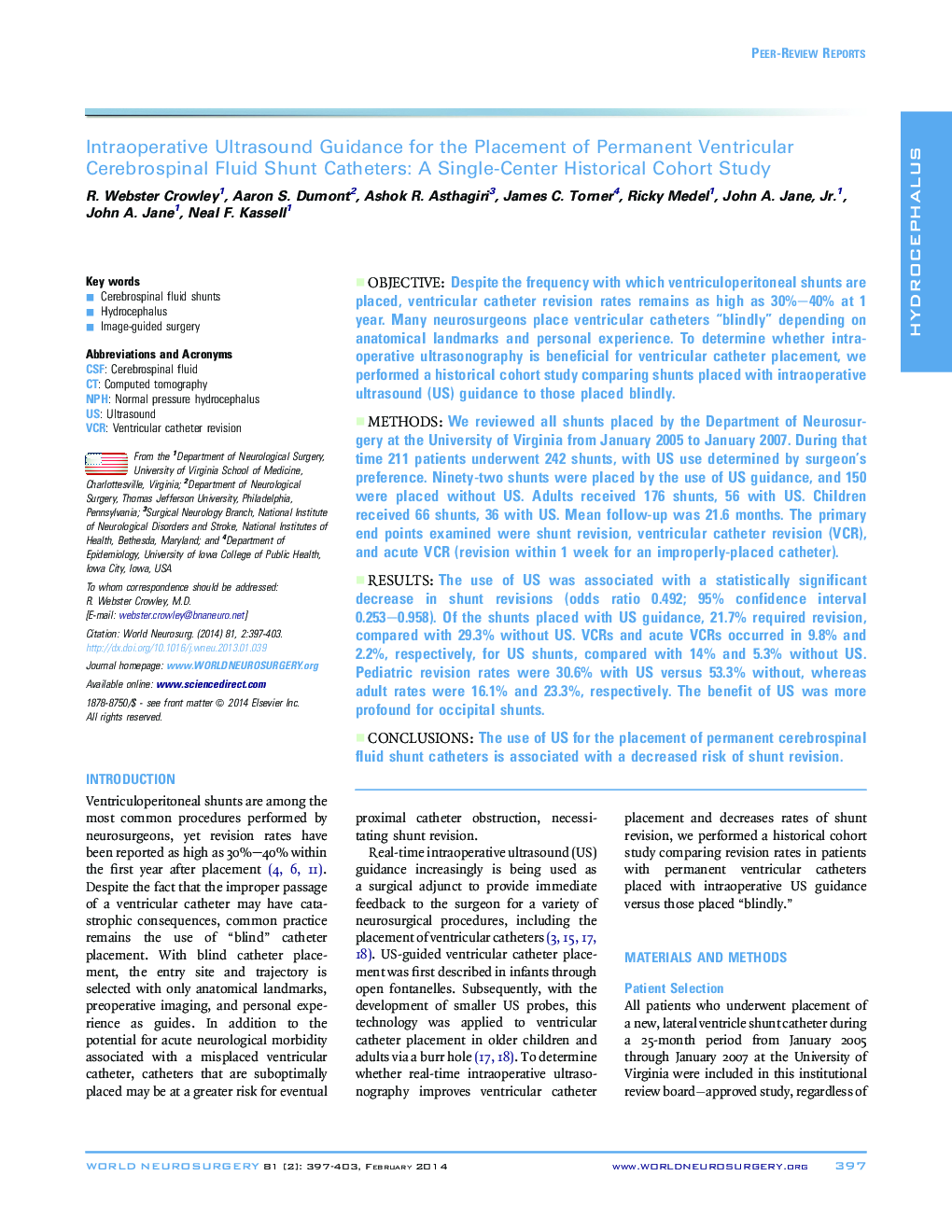| کد مقاله | کد نشریه | سال انتشار | مقاله انگلیسی | نسخه تمام متن |
|---|---|---|---|---|
| 3095732 | 1190916 | 2014 | 7 صفحه PDF | دانلود رایگان |
ObjectiveDespite the frequency with which ventriculoperitoneal shunts are placed, ventricular catheter revision rates remains as high as 30%–40% at 1 year. Many neurosurgeons place ventricular catheters “blindly” depending on anatomical landmarks and personal experience. To determine whether intraoperative ultrasonography is beneficial for ventricular catheter placement, we performed a historical cohort study comparing shunts placed with intraoperative ultrasound (US) guidance to those placed blindly.MethodsWe reviewed all shunts placed by the Department of Neurosurgery at the University of Virginia from January 2005 to January 2007. During that time 211 patients underwent 242 shunts, with US use determined by surgeon's preference. Ninety-two shunts were placed by the use of US guidance, and 150 were placed without US. Adults received 176 shunts, 56 with US. Children received 66 shunts, 36 with US. Mean follow-up was 21.6 months. The primary end points examined were shunt revision, ventricular catheter revision (VCR), and acute VCR (revision within 1 week for an improperly-placed catheter).ResultsThe use of US was associated with a statistically significant decrease in shunt revisions (odds ratio 0.492; 95% confidence interval 0.253–0.958). Of the shunts placed with US guidance, 21.7% required revision, compared with 29.3% without US. VCRs and acute VCRs occurred in 9.8% and 2.2%, respectively, for US shunts, compared with 14% and 5.3% without US. Pediatric revision rates were 30.6% with US versus 53.3% without, whereas adult rates were 16.1% and 23.3%, respectively. The benefit of US was more profound for occipital shunts.ConclusionsThe use of US for the placement of permanent cerebrospinal fluid shunt catheters is associated with a decreased risk of shunt revision.
Journal: World Neurosurgery - Volume 81, Issue 2, February 2014, Pages 397–403
